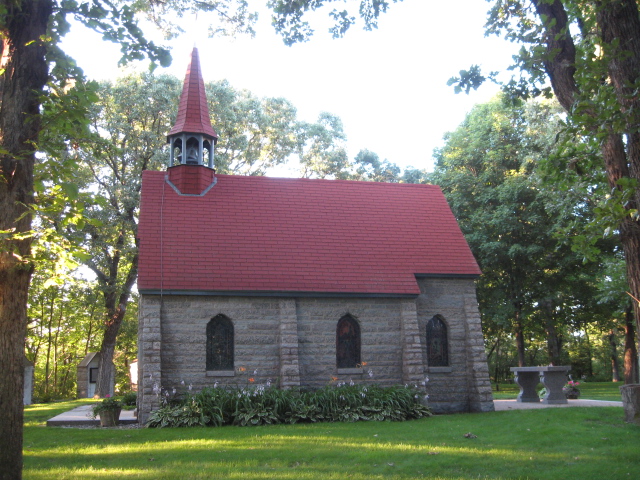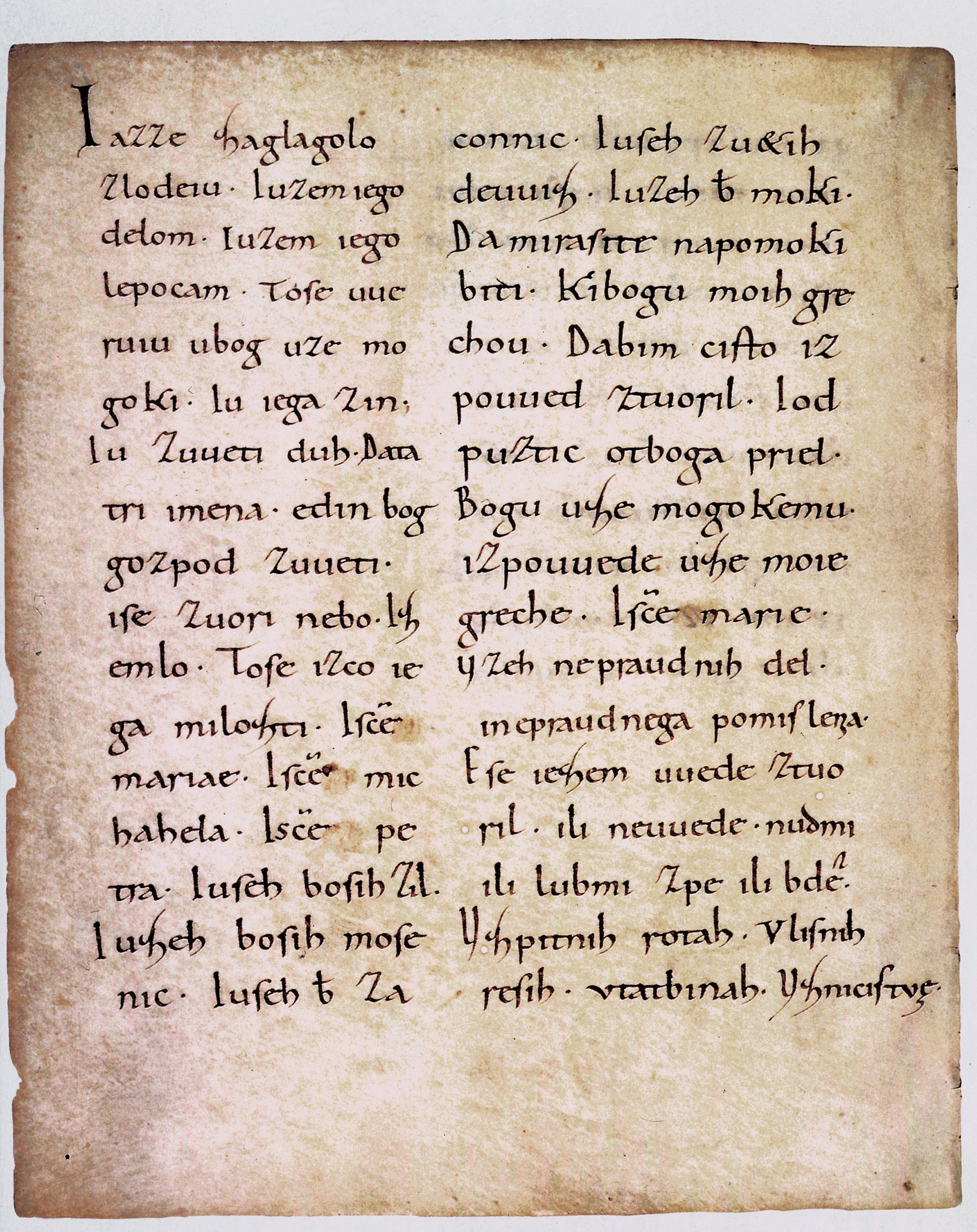|
Jacobs Prairie, Minnesota
Jacobs Prairie is an unincorporated community in Wakefield Township, Stearns County, Minnesota, United States. The community is located along Stearns County Road 2 at Glacier Road near Cold Spring and Rockville. History The community was homesteaded beginning in 1854 by German- and Luxembourgish-speaking Catholic settlers; including Bavarians, Eifelers, and Luxembourgers. The settlers were invited to the area by Slovenian Roman Catholic priest, missionary, and poet Fr. Francis Xavier Pierz, who had submitted letters and advertisements to the major German-language newspapers across the United States, like ''Der Wahrheitsfreund'' (''The Friend of Truth''), and in Europe, urging "good, pious" German Catholics to venture to the Sauk River Valley of central Minnesota. Fr. Pierz described the Sauk River Valley as a “land flowing with milk and honey” as well as safe from disease and anti-Catholic discrimination. The community's name derives from two of its earliest settlers, ... [...More Info...] [...Related Items...] OR: [Wikipedia] [Google] [Baidu] |
Unincorporated Area
An unincorporated area is a region that is not governed by a local municipal corporation. Widespread unincorporated communities and areas are a distinguishing feature of the United States and Canada. Most other countries of the world either have no unincorporated areas at all or these are very rare: typically remote, outlying, sparsely populated or List of uninhabited regions, uninhabited areas. By country Argentina In Argentina, the provinces of Chubut Province, Chubut, Córdoba Province (Argentina), Córdoba, Entre Ríos Province, Entre Ríos, Formosa Province, Formosa, Neuquén Province, Neuquén, Río Negro Province, Río Negro, San Luis Province, San Luis, Santa Cruz Province, Argentina, Santa Cruz, Santiago del Estero Province, Santiago del Estero, Tierra del Fuego Province, Argentina, Tierra del Fuego, and Tucumán Province, Tucumán have areas that are outside any municipality or commune. Australia Unlike many other countries, Australia has only local government in Aus ... [...More Info...] [...Related Items...] OR: [Wikipedia] [Google] [Baidu] |
Sauk River (Minnesota)
The Sauk River is a U.S. Geological Survey. National Hydrography Dataset high-resolution flowline dataThe National Map accessed November 29, 2012 tributary of the Mississippi River in central Minnesota in the United States. It drains small lakes in Stearns County. In the Ojibwe language it is called ''Ozaagi-ziibi'', meaning "River of the Sauks". It issues from Lake Osakis on the Todd County line and flows east through Guernsey Lake, Little Sauk Lake and Juergens Lake, then south through Sauk Lake and past Sauk Centre, southeast past Melrose and Richmond, then northeast through Cedar Island Lake and Zumwalde Lake, past Cold Spring and Waite Park to the Mississippi River north of St. Cloud. At St. Cloud, MN, the river has a mean annual discharge of 342 cubic feet per second. The rapids that occur south of the river's mouth on the Mississippi River lent their name to the nearby city of Sauk Rapids. History In 1847, the Mississippi Chippewa ceded their lands about the Sau ... [...More Info...] [...Related Items...] OR: [Wikipedia] [Google] [Baidu] |
Assumption Chapel
Assumption Chapel, also known as the Grasshopper Chapel, is a Roman Catholic church situated on the outskirts of Cold Spring, Minnesota. It was constructed in 1877, in petition for relief from the Grasshopper Plagues that devastated Midwest farmland between 1873 and 1877. History Plagues The first chapel built on this site was known as Maria Hilf, which means "Mary's Help" in German. At the time of its original construction in 1877, much of the Midwest was suffering from locust plagues. The plagues began in the summer of 1873, when Rocky Mountain Locusts laid claim to a territory spreading from southern Wyoming over Nebraska and the Dakotas all the way to Iowa and Minnesota. The first year the grasshoppers came looking for food and found it in the plentiful wheat fields, where they laid eggs. The newly hatched grasshoppers were wingless for the first six to eight weeks of life, but their work was no less devastating. Until they could fly, they crawled along and feasted on ... [...More Info...] [...Related Items...] OR: [Wikipedia] [Google] [Baidu] |
Anti-Catholicism In The United States
Anti-Catholicism in the United States concerns the anti-Catholic attitudes first brought to the Thirteen Colonies by Protestant European settlers, composed mostly of English Puritans, during the British colonization of North America (16th–17th century). Two types of anti-Catholic rhetoric existed in colonial society and they continued to exist during the following centuries. The first type, derived from the theological heritage of the Protestant Reformation and the European wars of religion (16th–18th century), consisted of the biblical Anti-Christ and the Whore of Babylon variety and it dominated anti-Catholic thought until the late 17th century. The second type was a secular variety which was partially derived from xenophobic, ethnocentric, nativist, and racist sentiments and distrust of increasing waves of Roman Catholic immigrants, particularly from Ireland, Italy, Poland, Cuba, and Mexico. It usually focused on the pope's control of bishops, priests, and deacons. ... [...More Info...] [...Related Items...] OR: [Wikipedia] [Google] [Baidu] |
Der Wahrheitsfreund
''Der Wahrheitsfreund'' or ''Der Wahrheits-Freund'' ("The Friend of Truth") was the first German language Catholic newspaper in the United States, and one of many German-language newspapers in Cincinnati, Ohio during the nineteenth century. It was published by the Roman Catholic Archdiocese of Cincinnati, and proceeds went to the St. Aloysius Orphan Society. History At the time of the paper's first issue on July 20, 1837, the Diocese of Cincinnati covered the entirety of Ohio and its English-language weekly, '' The Catholic Telegraph'', had circulated for several years. The ''Wahrheitsfreund'' founder, vicar general John Henni, served as editor from its founding to his appointment as the first Bishop of Milwaukee in 1843. By 1875, the paper had 14,400 subscribers. In 1907, the ''Wahrheitsfreund'' merged with Rev. Joseph Jessing's ''Ohio Waisenfreund'' (Ohio Orphan's Friend). Notable people Editors *Most Rev. John Henni editor/publisher from 1837 to 1843 *John James Maxim ... [...More Info...] [...Related Items...] OR: [Wikipedia] [Google] [Baidu] |
Francis Xavier Pierz
Francis Xavier Pierz ( sl, Franc Pirc or ''Franc Pirec''; german: link=no, Franz Pierz) (November 20, 1785 – January 22, 1880) was a Roman Catholic priest and missionary to the Ottawa and Ojibwe Indians in present-day Michigan, Wisconsin, Ontario, and Minnesota. Because his letters convinced numerous Catholic German Americans to settle in Central Minnesota, he is referred to as the "Father of the Diocese of Saint Cloud." Early life Father Pierz was born to a peasant family in Godič, near the Carniolan town of Kamnik in the Austrian Empire (now Slovenia) on November 20, 1785, and baptized ''Franz Xav. Pierz''. He entered the seminary of Ljubljana in the fall of 1810 and was ordained on March 13, 1813, by Bishop Kovacic.Grace McDonald,Father Francis Pierz Missionary" ''Minnesota History'', vol. 10, 107–125. Two of his brothers also became priests. After seven years as assistant pastor of the mountain parishes of Kranjska Gora and Fusine in Valromana (Bela Peč, in ... [...More Info...] [...Related Items...] OR: [Wikipedia] [Google] [Baidu] |
Slovenian Literature
Slovene literature is the literature written in Slovene. It spans across all literary genres with historically the Slovene historical fiction as the most widespread Slovene fiction genre. The Romantic 19th-century epic poetry written by the leading name of the Slovene literary canon, France Prešeren, inspired virtually all subsequent Slovene literature. Literature played an important role in the development and preservation of the Slovene identity because the Slovene nation did not have its own state until 1991 after the Republic of Slovenia emerged from the breakup of Yugoslavia. Poetry, narrative prose, drama, essay, and criticism kept the Slovene language and culture alive, allowing - in the words of Anton Slodnjak - the Slovenes to become a real nation, particularly in the absence of masculine attributes such as political power and authority. Early literature There are accounts that cite the existence of an oral literary tradition that preceded the Slovene written ... [...More Info...] [...Related Items...] OR: [Wikipedia] [Google] [Baidu] |
Roman Catholic Priest
The priesthood is the office of the ministers of religion, who have been commissioned ("ordained") with the Holy orders of the Catholic Church. Technically, bishops are a priestly order as well; however, in layman's terms ''priest'' refers only to presbyters and pastors (parish priests). The church's doctrine also sometimes refers to all baptised ( lay) members as the "common priesthood", which can be confused with the ministerial priesthood of the consecrated clergy. The church has different rules for priests in the Latin Church–the largest Catholic particular church–and in the 23 Eastern Catholic Churches. Notably, priests in the Latin Church must take a vow of celibacy, whereas most Eastern Catholic Churches permit married men to be ordained. Deacons are male and usually belong to the diocesan clergy, but, unlike almost all Latin Church (Western Catholic) priests and all bishops from Eastern or Western Catholicism, they may marry as laymen before their ordination as c ... [...More Info...] [...Related Items...] OR: [Wikipedia] [Google] [Baidu] |
Slovenian People
The Slovenes, also known as Slovenians ( sl, Slovenci ), are a South Slavic ethnic group native to Slovenia, and adjacent regions in Italy, Austria and Hungary. Slovenes share a common ancestry, culture, history and speak Slovene as their native language. Outside of Slovenia and Europe, Slovenes form diaspora groups in the United States, Canada, Argentina and Brazil. Population Population in Slovenia Most Slovenes today live within the borders of the independent Slovenia (2,100,000 inhabitants, 83 % Slovenes est. July 2020). In the Slovenian national census of 2002, 1,631,363 people ethnically declared themselves as Slovenes, while 1,723,434 people claimed Slovene as their native language. Population abroad The autochthonous Slovene minority in Italy is estimated at 83,000 to 100,000, the Slovene minority in southern Austria at 24,855, in Croatia at 13,200, and in Hungary at 3,180. Significant Slovene expatriate communities live in the United States and Canada, in other ... [...More Info...] [...Related Items...] OR: [Wikipedia] [Google] [Baidu] |
Luxembourgers
Luxembourgers ( ; lb, Lëtzebuerger ) are a Germanic ethnic group and nation native to their nation state of Luxembourg, where they make up around half of the population. They share the culture of Luxembourg and speak Luxembourgish. Luxembourgers were, much like Austrians, historically considered to be a regional subgroup of ethnic Germans and viewed themselves as such until the collapse of the German Confederation. Luxembourg became independent, while remaining in personal union with the Netherlands, after the signing of the Treaty of London in 1839. The personal union proved short-lived as it was bilaterally and amicably dissolved in 1890.Cole (2011), p. 246 Legally, all citizens of the Grand Duchy of Luxembourg are considered to be ''Luxembourgers'' per Luxembourgish law, although a distinct Germanic ethnolinguistic identification is vocally espoused and promoted. The corresponding adjective is "Luxembourgish". Location Most ethnic Luxembourgers live in the Grand Duchy ... [...More Info...] [...Related Items...] OR: [Wikipedia] [Google] [Baidu] |
Eifel
The Eifel (; lb, Äifel, ) is a low mountain range in western Germany and eastern Belgium. It occupies parts of southwestern North Rhine-Westphalia, northwestern Rhineland-Palatinate and the southern area of the German-speaking Community of Belgium. The Eifel is part of the Rhenish Massif; within its northern portions lies the Eifel National Park. Geography Location The Eifel lies between the cities of Aachen to the north, Trier to the south and Koblenz to the east. It descends in the northeast along a line from Aachen via Düren to Bonn into the Lower Rhine Bay. In the east and south it is bounded by the valleys of the Rhine and the Moselle. To the west it transitions in Belgium and Luxembourg into the geologically related Ardennes and the Luxembourg Ösling. In the north it is limited by the Jülich-Zülpicher Börde. Within Germany it lies within the states of Rhineland-Palatinate and North Rhine-Westphalia; in the Benelux the area of Eupen, St. Vith and Luxembourg. ... [...More Info...] [...Related Items...] OR: [Wikipedia] [Google] [Baidu] |






